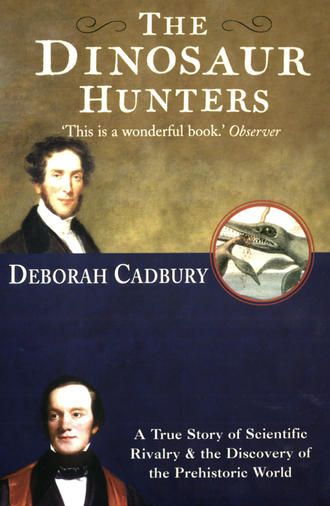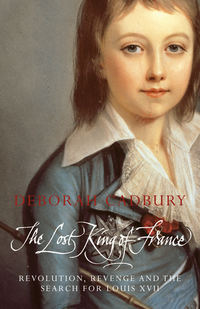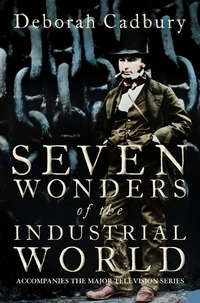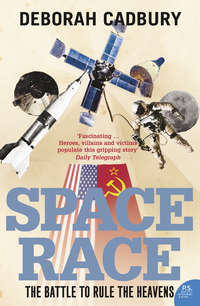
Полная версия
The Dinosaur Hunters: A True Story of Scientific Rivalry and the Discovery of the Prehistoric World
At the age of twenty-one he gained his diploma of membership of the Royal College of Surgeons and returned to Lewes, where he was immediately offered a partnership with his former master, James Moore. It was soon apparent that he faced a gruelling workload as a country doctor. Epidemics of cholera, typhoid and smallpox still raged. ‘An immense number of Persons in this Town and neighbourhood are ill with Typhus Fever,’ he recorded in his diary on one occasion. ‘I have visited upwards of 40 or 50 patients every day for some time: yesterday I visited 64. The small pox is also very prevalent, 14 have died with it, Taylor in Malling Street who had it in 1794 is now covered with various pustules and has been very ill.’ Armed with little more than boxes of leeches, which were sent from London in boxes of two hundred, he struggled on against these deadly diseases.
His practice included attendance on the sick poor of three parishes, for which he was paid £20 a year, and treating the inmates of the Poor House at St John’s, near Lewes. Long before the development of emergency services, the local doctor provided the only care, even for the severely injured: ‘This morning I was summoned to Ringmer, a poor woman on the Green, Mrs Tasker, had set fire to her clothes and was most dreadfully burnt, it is scarcely possible she should survive.’ For five weeks he visited for an hour every day to change her dressings. When she died, he noted, ‘I am almost fatigued to death.’
There were numerous mills in the district for grinding corn, for producing rapeseed oil and flour, and for brewing or malting, and even for producing paper. With child labour, accidents were common and, without anaesthetic, invariably traumatic: ‘I was called to a most distressing accident at Chailey Mill. A poor boy got his clothes entangled by an upright post that was rapidly revolving; the lad in consequence was whirled round with great velocity and his legs were dashed against a beam. It was considered absolutely necessary to amputate the left leg above the knee, but the constitutional shock was so great that the poor boy died the next day.’
The hours of Gideon Mantell’s medical practice were long and unpredictable, especially since he excelled at midwifery, delivering between two and three hundred babies a year. At a time when the average mortality for women in some hospitals was as high as one in thirty, Mantell had only two deaths in over two thousand births during fifteen years. His great success came at a price: ‘frequently I have been up for six or seven nights in succession: an occasional hour’s sleep in my clothes being the only repose I could obtain’. Nonetheless, with his conscientiousness and tireless energy he gradually increased the profits on the practice from £250 a year to £750.
Despite the immense pressures of his medical workload, Mantell was prepared to sacrifice his few leisure hours to make headway in geology as well. With the carelessness of youth he spared himself nothing, often studying until the small hours and rising after just four hours’ sleep, to see his patients before embarking on some geological expedition.
There were numerous local pits and quarries such as Jenner’s quarry, Malling Hill Pit, Malling Street Pit, Southerham Pit, each laying bare the strata of Sussex. Following the approach of William Smith, he aimed to construct a geological chart of the correct sequence of the local rocks. He paid the pit labourers for any interesting fossils that he could add to his cabinet, and soon became familiar with the beautiful creatures of this former sea. To help identify the invertebrates, Mantell wrote to James Sowerby, a naturalist who was compiling a catalogue of fossil shells. There were many different species of ammonite, the extinct mollusc with a spiral shell that had so enchanted him as a child. In gratitude for the perfect specimens Mantell sent, Sowerby named one species after him: Ammonites mantelli. Embedded with the ammonites in the chalk were bivalves, sponges and another extinct mollusc, the belemnites, with their characteristic conical shell divided into chambers.
As Mantell gained in confidence, he established a network of correspondence with those of similar interest, such as the indefatigable Etheldred Benett – a woman of formidable intellect and serious endeavour, not one to swoon with delight at fashion’s latest dictates or, indeed, to follow them. Although from a prosperous family in Wiltshire, Miss Benett did not succumb to the usual conventions of a woman in county society. Rather than settling into marriage in some comfortable country rectory she stayed firmly unattached, and her pony carriage would often be seen on the hills of Wiltshire while she pursued her main interest, geology. She devoted her life to her collection, and became so well known that eventually her name alone in the literature would suffice to denote work of outstanding quality.
For Mantell such correspondence was both prestigious – she was, after all, a member of the gentry – and highly beneficial, since he could extend his knowledge beyond Sussex. He wrote to her in 1814, requesting ‘the honour of a correspondence’. Miss Benett graciously replied by sending a hamper of fossils to the wagon office in Lewes. Soon they were immersed in comparing the strata of Wiltshire and Sussex, trying to decide which rocks lay above and below others in the sequence. Although not yet known as such they were trying to unravel the sequence of ‘Cretaceous’ rocks across Southern England, which had been formed between 144 and 66 million years ago. Mantell was aided in this by another member of the gentry, George Greenough, who was busily engaged in developing his geological map of England with William Buckland. Greenough was only too keen to capitalise on Mantell’s enthusiasm, frequently requesting more detailed information on the Sussex rocks. By 1815, Mantell had already identified several different strata within the chalk formation around Lewes, the lowest being blue marl, then chalk marl, lower chalk and upper chalk. Greenough steered his research and provided advice on naming the rocks.
In the course of his medical duties, Gideon Mantell was summoned to the assistance of a Mr George Woodhouse, a prosperous gentleman who owned a linen-draper’s business in London. While giving ‘unremitting professional attention’ to Mr Woodhouse, Mantell could hardly fail to notice his patient’s eldest daughter Mary. Her portrait shows a young woman with a mass of dark curls piled high, and large, regarding eyes, her face set off by a fashionably off-the-shoulder dress. She shared his interest in fossils and gave him gifts – corals from Worcestershire and other curiosities she had found. They soon ‘formed an attachment’ and, it would appear, could not wait to get married.
The bride was only twenty, a minor in the eyes of the law, when she married in May 1816, by special licence and with the consent of her mother as guardian. Unfortunately, her father did not live to see the wedding. Thanking Mantell for his ‘professional exertions and kind attention’ shortly before he died, Mr Woodhouse presented him with a treasured gift of James Parkinson’s survey of the fossil kingdom.
Once settled in Lewes, Mary Mantell dutifully helped her husband with the painstaking task of searching for fossils, which was rapidly becoming his consuming interest. It was not uncommon for her to ride out with him on geological expeditions and sometimes even on his medical rounds, when she would check the ground for fossils while he visited patients. She soon found she could assist him with drawings of his finds, and patiently tried to master the art of scientific illustration. ‘I am much pleased with her [Mary’s] first attempt at etching,’ wrote Etheldred Benett to Mantell in 1817. ‘A little practice to enable her to work stronger and bolder appears to me all that is wanting to make them a great ornament to your work.’
With growing self-confidence in his geological observations, Gideon Mantell now decided to write a book setting out his findings on the rocks of Sussex, which he hoped would establish his scientific credentials and perhaps secure his membership of one of the prestigious scientific societies. Mary undertook the illustrations: a fragment of the claw of a crustacean, part of the dorsal fin of a fish, the extraordinary sharp spines of the Plagiostoma spinosa – all the dismembered bits of Nature in their incredible variety. With his wife’s total support and interest, Mantell described his happiness after his marriage as ‘greater than ever’.
As Gideon Mantell began to explore further afield, he realised that there was very different rock to be found in an area known as the Weald, a forest-covered ridge lying between the chalk hills of the North and South Downs. ‘Advancing from the Downs, an outcrop of sandstone is first seen near Taylor’s bridge,’ he observed, ‘and it subsequently appears by the stream that winds along Cuckfield park. At this spot in Whiteman’s Green an excavation has been made.’ As he approached the quarry, he could see tucked below the gorse, wild thyme and trees clinging to the rocks at the surface, the Weald strata exposed to a depth of some forty feet. There were horizontal layers of sandstone, limestone and slate, lying on a bed of blue clays.
With growing excitement, as he examined fragments of rock he began to realise that the fossils entombed in the layers of sandstone and limestone at Whiteman’s Green were quite unlike the invertebrates of the chalk hills around Lewes. Embedded among the debris appeared to be petrified fragments of larger bones. He mentioned this in his letters to George Greenough and Etheldred Benett in the autumn of 1817, explaining that he had uncovered the teeth and bones of vertebrates: amphibia, perhaps crocodiles or alligators. However, the fossils were so mutilated and worn that they were almost impossible to interpret or classify. The logical, tidy plans of the past months, the neat orderly drawings of invertebrates, everything that had fired his imagination about the former sea of chalk, began to be overshadowed by these curious fossil beds.
Whiteman’s Green was too far from Lewes for Mantell to ride out each day, and with the arrival of his first child, Ellen Maria, in 1818 he had even less time than before. So he began negotiations with a Mr Leney who ran the quarry, and during the next year parcels from Cuckfield began to arrive at the Lewes wagon office. The first delivery was not particularly exciting: ‘the bones, teeth and the tongue of a fish’. After another abortive trip when ‘it rained in torrents nearly the whole of our journey’, Mantell ‘made further arrangements with Leney respecting the Cuckfield fossils’. He is likely to have taught the quarryman to search for the remains of larger bones. It wasn’t long before several packages arrived from him, including some fossils that Mantell described as ‘superb specimens’.
Among the fragments of larger bones there were also invertebrates, such as tiny fossil shells and snails. Mantell tried to describe these to Etheldred Benett, although he admitted they were so damaged ‘it is scarcely possible to ascertain the genera or species’. Nonetheless, Miss Benett thought the shells from the Weald were similar to those uncovered in a rock she knew called ‘Purbeck limestone’. This is a formation that stretches across Wiltshire and Dorset that was well established in the geological sequence as Secondary rock. The Weald and the Purbeck, Mantell wrote, following Miss Benett’s advice, ‘correspond in so many particulars … that there is every reason to suppose that they belong to the same formation’. If this was true, the rocks at Whiteman’s Green in the Weald lay well below the chalk at the top of the Secondary series. He was revealing tantalising glimpses of a former world that had thrived an unknown number of years before the fishes and ammonites embedded in the chalk.
All this time Mantell’s medical practice prospered, and he was able to buy a house in Castle Place from his former partner, James Moore, for £700. By 1819 he could afford the house next door and the two houses were knocked together, becoming known, grandly, as ‘Castle Place’. Positioned prominently in the High Street and backing on to Lewes Castle, the imposing home was a world apart from the modest cottage in St Mary’s Lane where Mantell had been brought up. A team of craftsmen was hired to create a gracious interior with Georgian windows to the floor, ornamental arches over the stairwell and even carvings of ammonites to decorate the Ionic columns at the front of the house. As if to complete the metamorphosis from bootmaker’s son to doctor of standing, Mantell adopted the coat-of-arms of his forebears and painted them, entwined with those of Woodhouse, on the porch outside and on the marble table in the dining-room. But if Mary Mantell was under any illusion that she might acquire an elegant new drawing-room to entertain guests, she was to be disappointed. Her husband’s burgeoning ‘little cabinet’ became a grand ‘Collection’ and quickly came to fill the new first-floor drawing-room.
As news of Gideon Mantell’s collection spread, visitors came to view the fossils. One caller was that same Lieutenant-Colonel Thomas Birch who had sought out Mary Anning; Mantell described him as a ‘very agreeable and intelligent man’. Birch had been touring the West Country and had spent much time in Dorset buying fossils of the Ichthyosaurus – or ‘Proteosaurus’ as it was still called – from Mary. Naturally, Mantell was intrigued to know how Birch’s giant Ichthyosaurus bones compared to the fragments he had found. In March 1820, shortly after the birth of his second son, Walter Baldock, Mantell received an intriguing letter from Lieutenant-Colonel Birch.
‘I am going to sell my collection for the benefit of the poor woman and her son and daughter at Lyme who have in truth found almost all the fine things,’ Birch wrote. ‘I found these people, the Annings, in considerable difficulty – on the act of selling their furniture to pay their rent – in consequence of their not having found one good fossil for near a twelvemonth. I may never again possess what I am about to part with; yet in doing it I shall have the satisfaction of knowing that the money will be well applied.’
Birch was genuinely concerned that the Annings had not been able to maintain their early success. Apart from an Ichthyosaurus uncovered in 1818, they had had no more significant finds. Birch’s sale was planned for 15 May, in the Egyptian Hall in Piccadilly. Gideon Mantell attended the auction and had a chance to see Mary Anning’s ‘marine lizards’: an Ichthyosaur femur and head that was bought for Georges Cuvier in Paris, a partial skeleton, vertebrae and other fossils. Lieutenant-Colonel Birch’s sale raised £400 for the Annings.
Less than a month later, in June 1820, Gideon Mantell entered in his diary: ‘received a packet of fossils from Cuckfield. Among them was a fine fragment of an enormous bone; several vertebrae and some teeth.’ Having met Birch and seen Mary Anning’s giant sea lizards, he immediately wrote that these giant bones must belong to a ‘Proteosaurus or Ichthyosaurus.’ After all, this was the only large creature that had been described in England. Inspired by this discovery of the largest bone he had received so far, he began a series of excursions to Whiteman’s Green in the Weald, the mundane little quarry where workmen laboured for basic stone material, unaware that they were laying bare the secrets of the past. To Mantell the quarry was a magical place; it was like entering the ancient tombs, where extraordinary records of a former world were waiting to be explored. With great enthusiasm, on 16 August 1820 he took the entire family on an outing to the quarry: ‘We made an excursion to Cuckfield; my brother drove the ladies in his chaise and I rode on horseback.’
But the more specimens he found, the more baffling the site became. Strangely, although he believed the animal bones belonged to an Ichthyosaurus, or sea lizard, he began to find the petrified remains of land plants. These fossils were difficult to interpret, some blackened like charcoal, with cracks and fissures filled with white crystalline minerals or the brilliant bronze of fool’s gold. As he scrutinised the stone, he thought he could discern fragmentary remains of leaves, stems and other ‘ligneous structures’, which appeared to be of vegetable origin.
Before 1820, very little was known of fossil botany. In the eighteenth century, Carl Linnaeus had developed a detailed classification system for plants, establishing in his catalogues of several thousand plant species from all over the world the ground rules that a botanist should follow to describe and name plants correctly. Since then, other scholars had occasionally attempted to identify fossil plants, but there were few systematic studies of fossil species before 1820, and names had no legal status. Faced with tantalising impressions of the relics of plants that he could not recognise, Mantell had no knowledgeable source to which he could turn. ‘I am unacquainted with any vegetables either recent or fossil with which these remains can be identified,’ he wrote.
During one trip to the quarry at Cuckfield in 1820 he had a breakthrough. He unearthed, buried with more giant bones, part of a tree trunk more than three feet long, very weathered, with the rudiments of branches. He could see at once that the trunk was covered in distinctive diamond-shaped scars, resembling woody bases where leaf stalks were once attached. This was nothing like the English trees around him, the familiar indentations on the bark of oaks, chestnuts and birches. The roughened surface of the trunk, the pattern of scars from woody leaf stalks, were striking – like those of a tropical palm.
Mantell soon found other fossils, too, which bore more resemblance to a tropical flora. Some of the leaves and stems he thought were like Euphorbia from the East Indies, a lush, flowering shrub. With some confidence he entered in his journal on 17 August 1820: ‘Had a very fine specimen of Euphorbia from Cuckfield.’ Two weeks later, he sent ‘a large and beautiful specimen of fossil Euphorbia from Cuckfield to Mr Greenough … it was embedded in mastic, the same composition as used for the Minerets and Domes of the oriental palace at Brighton’. In fact, flowering plants, like Euphorbia and palms, had not yet appeared on the map of the primitive landscape. The history of fossil plants and the habitat for Mantell’s unknown giant creature were stranger than anything he could anticipate with the limited evidence then available to him.
In 1821, as Mantell was trying to find out more about tropical plants and animals, the Reverend William Conybeare completed his detailed study of Ichthyosaurus for the Geological Society. This was to provide another clue to the giant bones. Conybeare had included beautiful anatomical drawings of the bones of Ichthyosaurus. When Mantell compared the fossil bones that he had uncovered at Whiteman’s Green in the Weald, he found that they were very different from those of the sea lizard of Lyme. The vertebrae of an ichthyosaur were slender and deeply hollowed, allowing for the flexible movements of an animal living in water – nothing like the chunky, solid vertebrae that he had uncovered in Sussex. The leg bone of the Ichthyosaurus was more like the fin of a fish; the slender central bone, the humerus, ‘immediately supporting a very numerous series of small bones, form[ed] a very flexible paddle’. But the portion of giant femur, or thigh bone, that he had found in the Weald bore no resemblance to any bone in the sea lizard. It was truly enormous: the fragment, of the top part of the bone, was over two feet long and twenty inches in circumference. If this fragment of a giant leg was not derived from an Ichthyosaurus, then to what kind of monstrous creature could it belong?
Apart from the shape of the bones, there was another clue that the unknown creature from the Weald was not a sea lizard. When a creature dies at sea, its body sinks down to the ocean floor and is gradually covered by a fine rain of particles that form the new sediments. As it is gradually densely packed with layers of sediment accumulating above, the bony skeleton can be well preserved, just like the ichthyosaurs of Lyme. But when a creature dies on land it is much more likely to be destroyed, falling prey to some other animal or scattered by wind and rain, leaving only a confused jumble of bones. Mantell could recover only fragments of bone from the Weald, never a full skeleton. As yet, he had not even found two bones joined together. It occurred to him that these worn relics of giant bones might have belonged to a creature that spent at least part of its life on land, beneath the shade of palms.
In the quiet of night, when all the town was long since asleep and his medical duties were completed, Gideon Mantell studied the fossils he had found, so utterly absorbed in his work that he was often unaware that the small hours were approaching. With careful use of chisel and hammer, the shape of the bones slowly emerged from the surrounding stone like some strange primordial sculpture, perhaps more impressive than something that is finished, containing all the promise of a great work of art gradually taking shape before his eyes. He would glimpse eerie fragments of the ancient animal: the exquisitely smooth curve of the giant femur, the sharp points of the damaged vertebrae, the strange ridges on the enamel of the teeth; the foramina, or holes, for blood vessels, far larger than any human capillary. It was unearthly.
To try to make more sense of this confusing picture, he would use as a reference Georges Cuvier’s acclaimed four-volume summary, Recherches sur les Ossemens Fossiles des Quadrupèdes, which had been translated into English in 1813. Here Cuvier outlined the details of several species of ancient extinct crocodiles found at Honfleur and Le Havre. Mantell compared his fossils against Cuvier’s drawings, and some of the bones, especially the vertebrae, seemed to correspond. To obtain a second opinion, he now made arrangements to view the Hunterian Museum at the Royal College of Surgeons in London. John Hunter’s collection of ten thousand anatomical specimens had been bought by the government after his death in 1793 and placed in the Royal College at Lincoln’s Inn Fields. Here, they were being catalogued by Hunter’s former apprentice, William Clift.
The child of a poor family in Devon, Clift possessed an exceptional talent for drawing which had been noticed by the local gentry, and he had been sent to assist Hunter. Greatly honoured by this appointment, the young Clift had laboured long hours for little pay, helping with dissections before breakfast at six in the morning and often not finishing until after midnight, the evenings being spent in dictation. Within a year of his apprenticeship, Hunter died, but he revered his former master and was determined to continue his work.
Although hampered by the fact that Sir Everard Home had removed many manuscripts that would have helped to identify the specimens, Clift struggled on, trying to prepare Hunter’s collection for public view. By the 1820s, his experience was considerable. When Gideon Mantell presented him with one of the pointed, curved teeth he had found, Clift did not hesitate: ‘there can be no doubt of its having belonged either to the crocodile or the monitor [lizard]. I know of no animal whose teeth have the lateral ridges so strongly defined.’
From such discussions with Clift and comparisons with Cuvier, Mantell began to think that at least some of the giant bones could be assigned, not to a sea lizard, but to an ancient species of crocodile. He wrote in summer 1821 to a friend, the MP and Fellow of the Royal Society Davies Gilbert, telling him of the giant bones of crocodiles that he had found that spring in the Weald. ‘There can be no hesitation,’ said Mantell confidently, in assigning them to ‘the same unknown species of Crocodile, as discovered at Honfleur and Havre’.
But soon after this, Mary Mantell made a remarkable discovery that did not fit this conclusion. There are several versions of the event; the most plausible recounts that the incident occurred one morning in 1820 or 1821, when Mary was accompanying her husband on his medical rounds. While waiting for him to see his patient, she searched for fossils. As she walked, her eyes were irresistibly drawn to a strange shape in a pile of stones that had been heaped by the side of the road. Picking up the stone, she brushed away the white dust, gently removing any loose rock with her fingers. Gradually a shape emerged never previously seen by human eye. It was very smooth, worn and dark brown, rather like a flattened fragment of a giant tooth.








